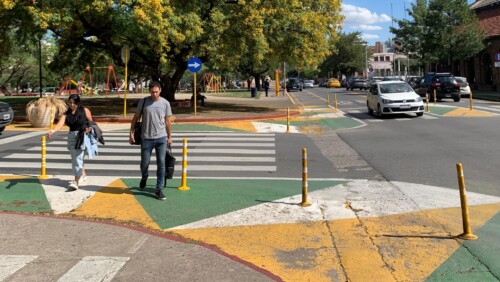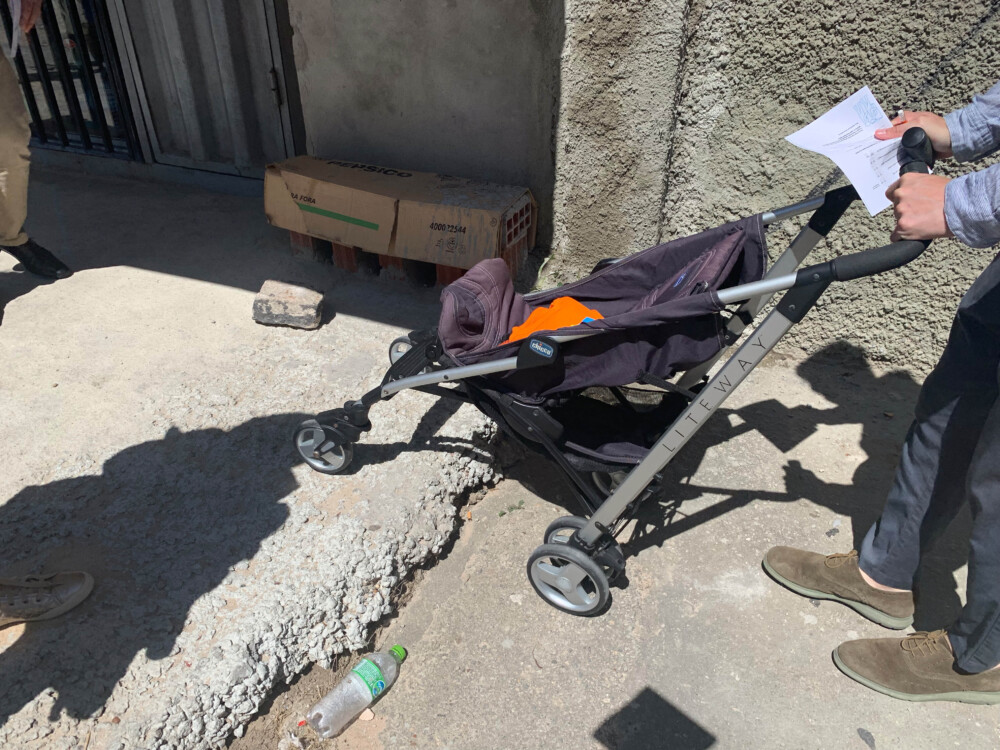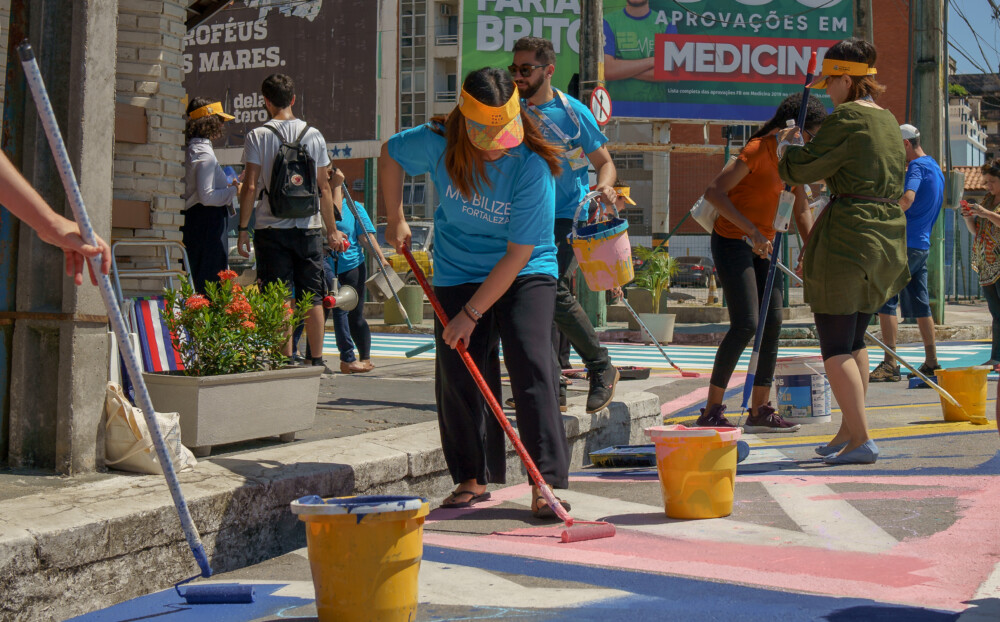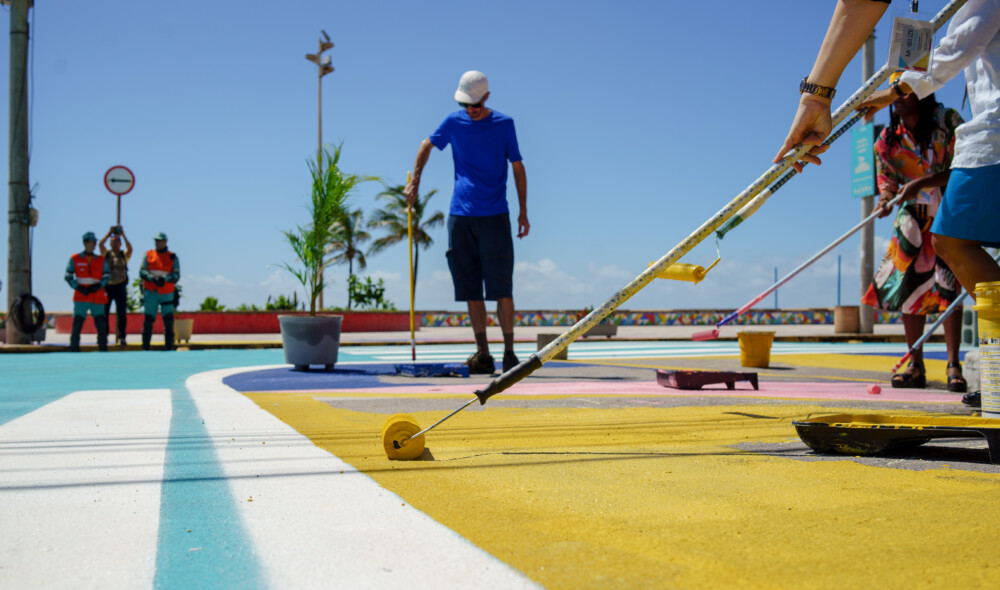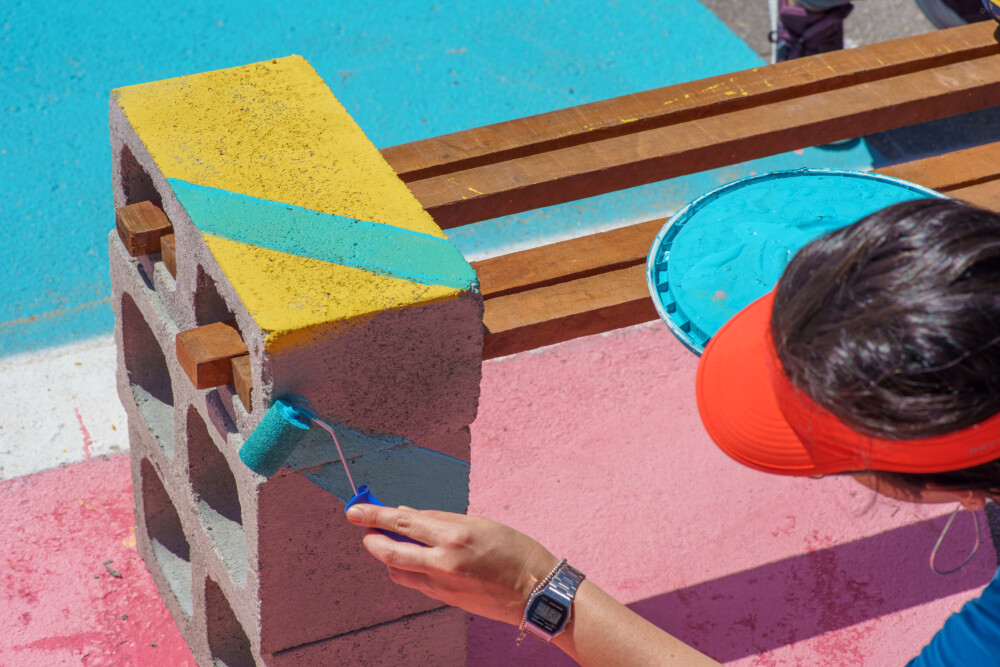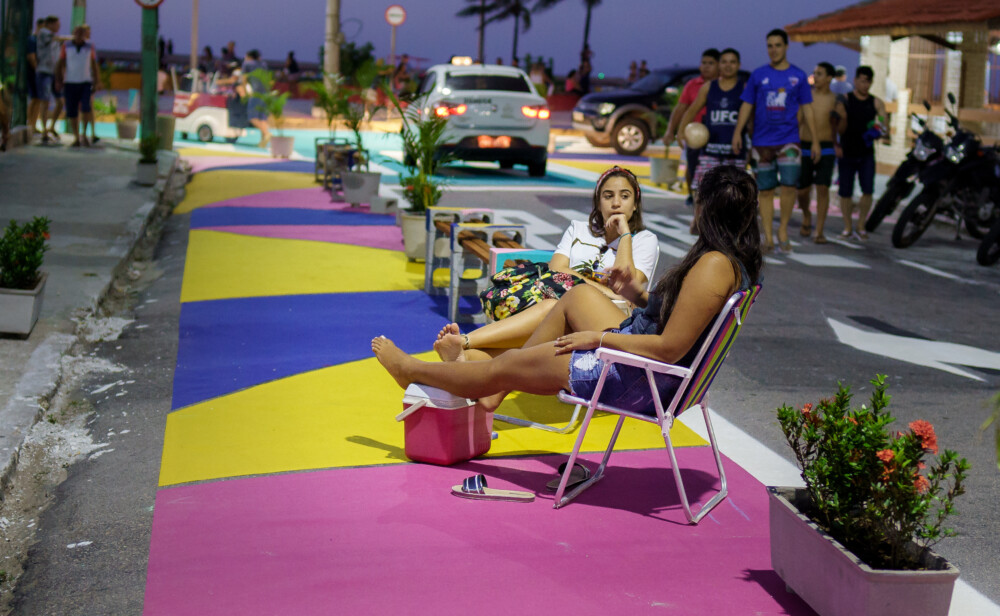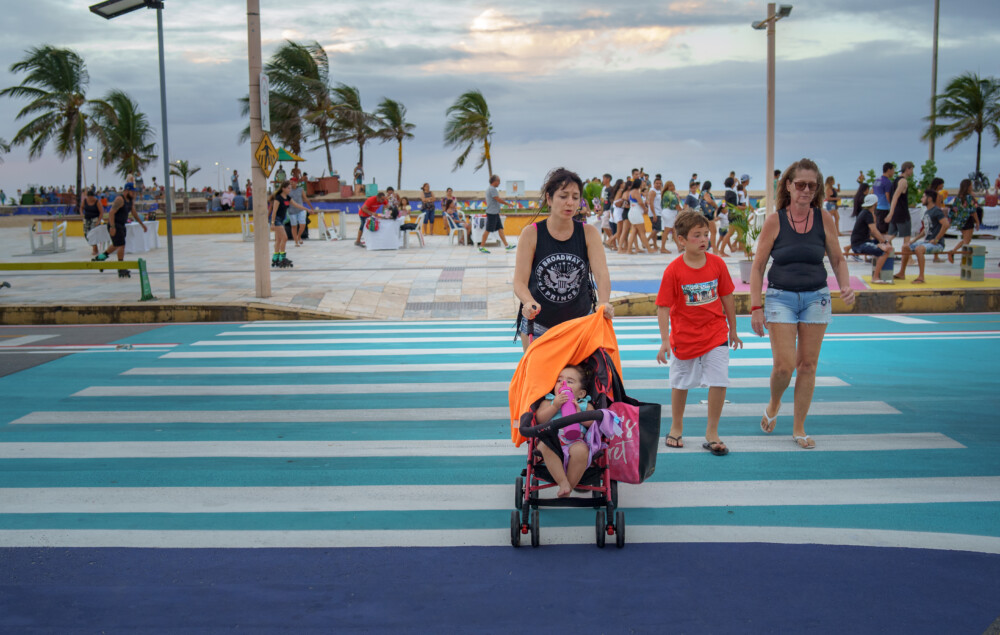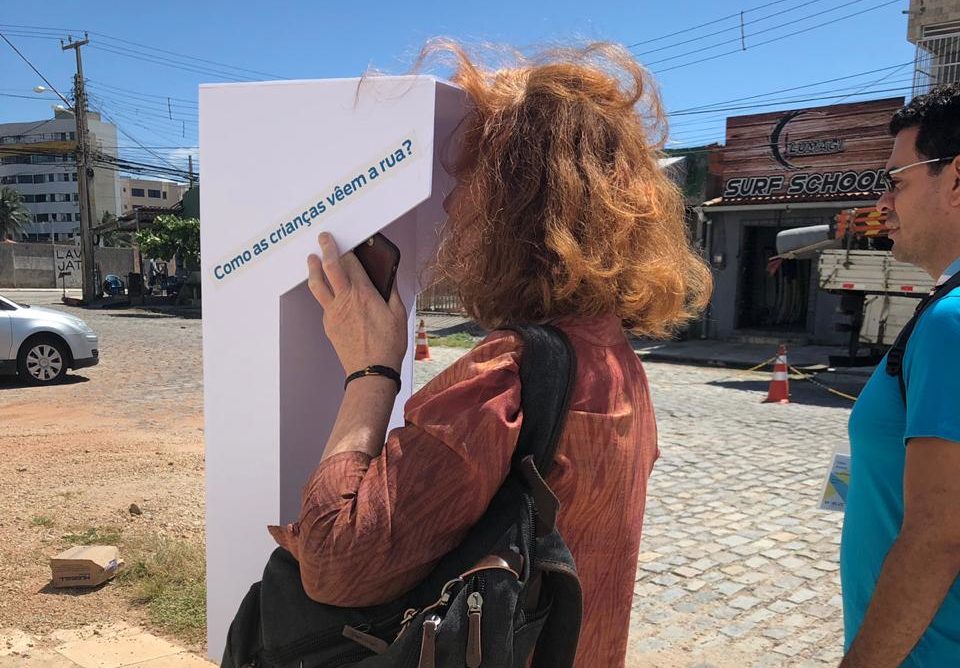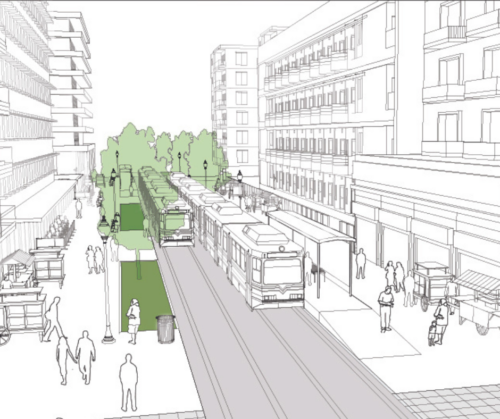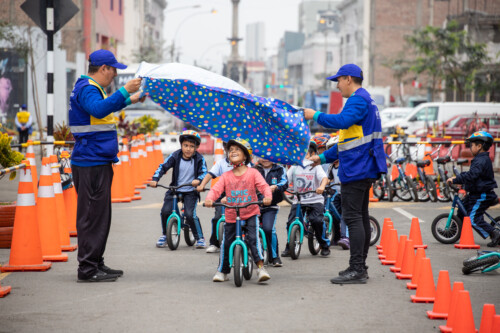Click on image to play video.
Over the past five years, Fortaleza, Brazil, has radically reshaped their streets to prioritize people walking, rolling, cycling, playing, staying, and taking public transportation. This year, Fortaleza was appointed as the host city for the Institute for Transportation and Development Policy’s MOBILIZE Summit after winning the organization’s Sustainable Transport Award for its dedication to advance road safety and sustainable mobility agendas through low-cost, high-impact programs and policies. GDCI has been working closely with the city of Fortaleza since 2017 under the Bloomberg Philanthropies Initiative for Global Road Safety (BIGRS).
In June, our team attended the MOBILIZE Summit and facilitated a tactical urbanism workshop. Attendees helped transform an intersection, contributing to a larger low-speed zone project in the neighborhood of Praia de Iracema. Using low-cost materials, the redesign includes curb extensions that are proven solutions to reduce speeds for cars and increase safety for all road users while enhancing the public space. This project builds off of the experiences of projects like Cidade 2000, Prioritizing Safer Access to Albert Sabin Children’s Hospital, and Bringing Life Back to the Streets of Dragao do Mar.
[twenty20 img1=”27882″ img2=”27883″ offset=”0.5″]
At MOBILIZE, our team also participated in a panel discussing the power of interim street design interventions to promote sustainable mobility and road safety. We then took these teachings to the streets by facilitating a Streets for Kids-focused walkshop, which showed participants the power of using design strategies for kids and caregivers that make streets immediately safer, healthier, and more inspirational. This walkshop was designed based on teachings from GDCI’s Streets for Kids program and forthcoming publication Designing Streets for Kids.
